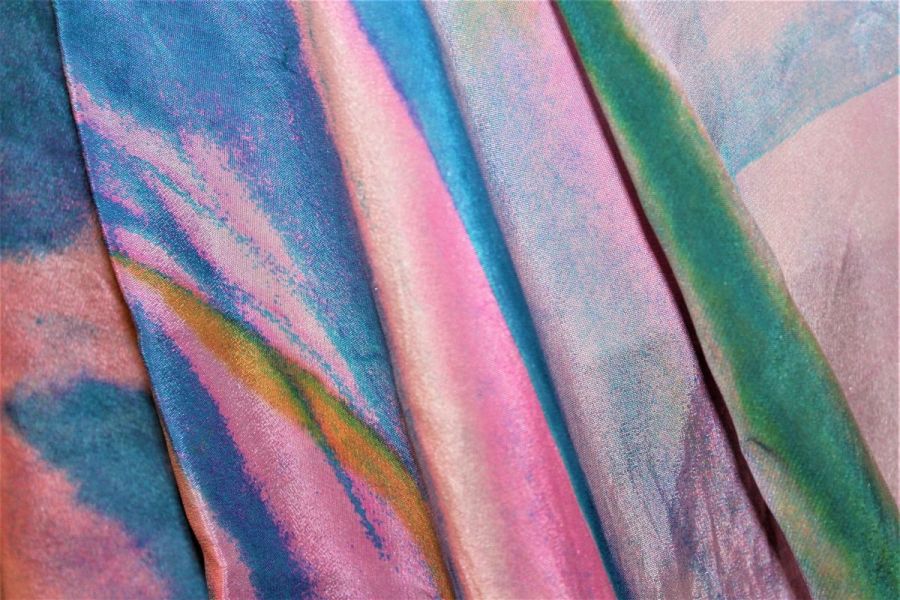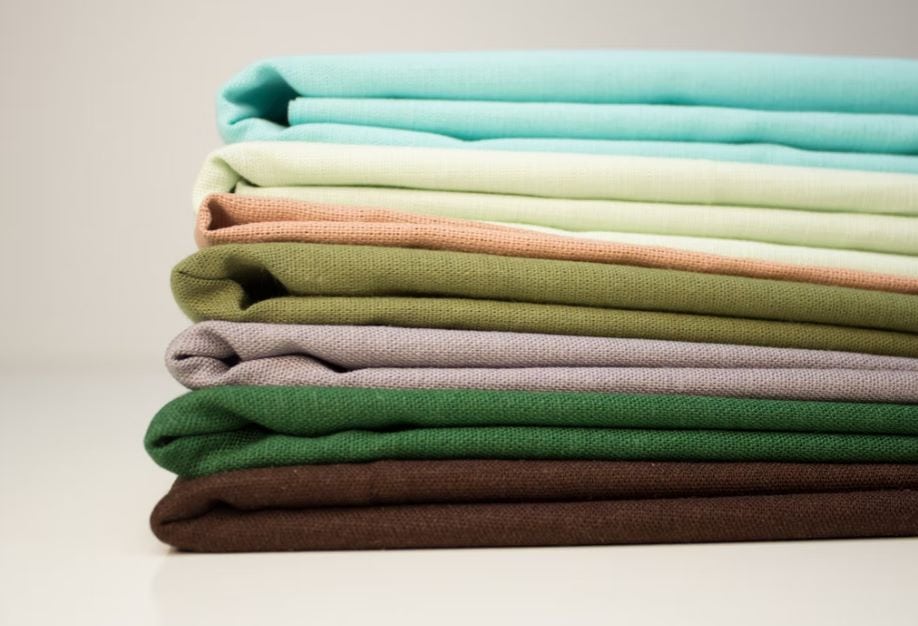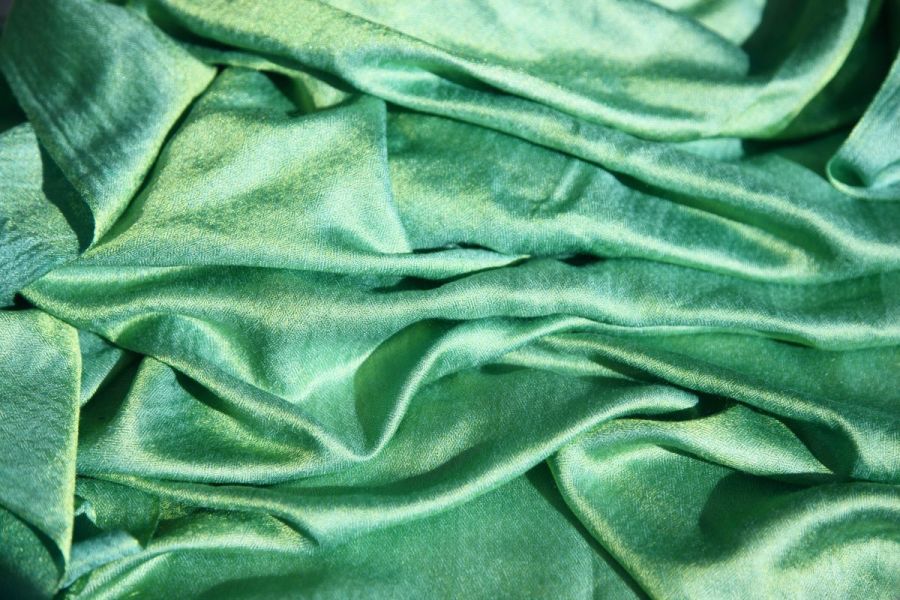Although recycled polyester and virgin polyester are both types of the same fabric, there are notable distinctions between the two in terms of the characteristics that the fabric exhibits. There are a lot of myths that revolve around the fabric polyester, which is used in clothing. Some individuals are under the impression that if a fabric is made from recycled polyester, then it will be of a lower quality and will not last as long as fabrics made from virgin polyester. This is a common misconception.
In contrast, this is not the case at all! Recycled polyester can have the same level of strength and durability as virgin polyester because both types of polyester are manufactured from the same kinds of raw materials, such as plastic bottles. The primary distinction between these two kinds of fabric is found in the post-production processing of the garments that are fashioned from them; in other words, the way that the fabric is dealt with after it has been fashioned into an item of clothing.
Polyester is one of the materials that is used in the textile industry on a regular basis, making it one of the most widely used materials. Every year, the global textile industry produces more than 22.67 billion tonnes worth of polyester for use in clothing. It is particularly well-liked in the sector of the economy that deals in the production of sportswear due to its remarkable degree of elasticity and "sweat-proofness."
Polyester, on the other hand, is not only one of the materials that is the least sustainable but also one of the materials that is the most polluting on the entire planet. This article compares recycled polyester to virgin polyester with regard to the technical quality of the two types of polyester as well as the impact that each type of polyester has on the surrounding environment. In addition to this, we investigate the reasons why it is our top pick for the production of our running clothes as well as the ways in which it can assist us in making a positive impact on the world around us.
FAQs About Recycled Polyester
Polyester is a manmade fiber that is made from oil and synthesized from petrochemical products by a process called polymerization. As a raw material, it is a clear, strong and flexible plastic that is used for PET – a short term for polyester – bottles and a lot of other purposes. It is 100 percent recyclable and it can be done by either mechanical or chemical processes. The recycled polyester used for textiles is most commonly from PET bottles.
Not necessarily. If you use the term “more sustainable” you should define what the product is compared to. Check if it is “100 percent recycled” – a lot of the time it is a blend of virgin and recycled polyester that is used. And most importantly: the claim has to be certified by a third party.
There are a lot of these labels and certificates on the market. Which ones do you recommend that the end consumer look for? The Recycled Claim Standard and The Global Recycled Standard both verify the recycled input material, and track it all the way to the final product. The latter also ensures responsible social, environmental practices and chemical use through production.
Yes, that is true. One reason is that virgin polyester is produced in much higher volumes. International demand is growing and that will help with making recycled polyester price competitive. Multinational sporting goods companies, such as Nike, were early in their use of recycled polyester. In recent years, even the giants in the fashion industry have begun to use it more and more. In the long term, I believe that prices will level out, especially if companies and industries work together and provide clear signals to the suppliers, so that they dare to invest.
Yes absolutely. Several companies have the technology needed to recycle polyester clothing. The problem is rather the collection, distribution and costs. The infrastructure needs to be built in order for textiles to be recycled on a larger scale. Here too, companies and trade associations in sports, fashion and outdoor could collaborate more to quicken the pace.
In some cases, it is technically possible, for example blends with polyester and cotton. But it is still at the pilot level. The challenge is to find processes that can be scaled up properly and we are not there yet.
What Exactly Does It Mean to Be Made of Polyester? 
It is a man-made chemically synthesized fibre that is obtained from a chemical process among petroleum, air, and water. This reaction takes place in a laboratory setting. The most common type of polythene terephthalate, also known as PET (which is an abbreviation for polythene terephthalate), is polyester. The process of patenting it occurred during the 1940s decade. Since that time, the quantity of polyester that is used in the manufacture of commodities such as upholstered furniture, clothing, and industrial fabrics has skyrocketed.
Polyester is a widely used material in a diverse range of industries due to the many advantageous properties it possesses. One sector that falls into this category is the sports textile sector. Polyester fibres are an athlete's best friend because they are relatively elastic, resistant to abrasion, simple to assume responsibility for, and, most importantly, they dissipate less moisture and allow sweat to evaporate more conveniently than some other types of clothing material.
Polyester, on the other hand, is a fibrous material that is derived from a resource and therefore cannot be replenished. Despite the fact that polyester might be a great option for athletic wear, this is the case nonetheless (petroleum). When one takes into account the fact that the oil sector is one of the biggest contributors and funders to climate change in the world, one naturally begins to form unfavourable opinions regarding the sector. In addition, polyester is indeed not biocompatible; it may reach up to two hundred years for it to completely disintegrate, and during that time it will pollute the earth and the oceans, both of which are necessary for the maintenance of life.
When one takes into consideration a variety of factors, it is not hard to see that manufacturing of virgin polyester is not in any way sustainable. Therefore, for athletes who may need high-performance sports clothing, what would be the next best thing to have?
What Is the Most Suitable Alternative to Pure Polyester?
At the time that we were just beginning to conceive of The Running Republic, this became abundantly clear that despite the fact that polyester and polyamide are the finest fibres in athletic wear, we would not be using them in their natural, unprocessed states in any of our products.
Because of the ongoing worldwide crisis caused by the pollution caused by plastic, we did not want to release any new materials that could potentially contaminate the environment. This is related to the fact that there is currently a global emergency regarding the pollution caused by plastic.
Following a number of months' worth of further research and participation in dozens of conversations with a variety of fabric manufacturers, we arrived at the conclusion that recycled polyester is the most preferable option to virgin polyester that is currently available for purchase in the marketplace (also known as rPET).
According to the findings of our research, recycled polyester possesses a plethora of benefits, both in terms of its technical properties and its contribution to the preservation of the environment. These advantages can be broken down into three categories: To get a better understanding of these benefits, let's start by defining what recycled polyester is and talking about the manufacturing process.
How Is Recycled Polyester Manufactured?
Producing recycled plastic involves first collecting waste plastic, such as bottles or fishnets, then transporting it to processing industries, heating it up down into pellets, and finally spinning the pellets into novel polyester material. This is the process.
Recycled polyester keeps the same consistence, elasticity, resistance to abrasion, ability to wick away moisture, and colorfastness as new polyester does. In contrast to virgin polyester, however, recycled polyester is significantly more viable and less harmful to the environment than traditional polyester. Because of this, we came to the conclusion that it would be a better option to do it in the production of our athletic clothing because it is a better choice overall (in line with recycled polyamide material).
We are doing our part to protect the environment by using renewable materials in our products. As a result of not being required to release any residual oil into the surroundings, we are able to conserve slightly more than 1 litre of oil for every kilo of material that has been recycled. By making use of recycled polyester that was produced from post-consumer materials, we are able to cut down on the amount of waste plastic that is released into the environment by a sizeable amount. One kilogramme of waste, such as plastic that has been collected from the ocean, can be transformed into one kilogramme of material that has been recycled.
When compared to virgin polyester, recycled polyester has a reduction in energy consumption of fifty percent throughout the entirety of the manufacturing processes and a reduction in carbon dioxide emissions of seventy percent. This fact brings up our last and most important point. Because carbon dioxide is among the most important factors in both the development of the glasshouse effect and the acceleration of climate change, it is of the utmost importance that we reduce our emissions to the greatest extent that we are capable of doing so.
The Impact Of Using Recycled Polyester
So, in order to better understand this, let's take a step back and look at the bigger picture. When recycled polyester is used in place of virgin polyester, how exactly does this help the global community? The manufacturing process for recycled polyester doesn't quite require the use of any kind of oil as either a primary raw material in any stage of the process. Over the course of time, we would be capable of reducing our dependance on petroleum, which would make it more challenging for people to extract it from the ground. If the process of recycling polyester were more widely used, then accomplishing this goal would be feasible.
One way to help reduce the amount of trash that winds up in the ocean and prevent trash from being dumped in landfills is to use recycled polyester. This is one way that can help reduce the amount of trash that ends up in the ocean. In addition to this, it has the potential to reduce the quantity of plastic that is burned, which in turn reduces the amount of toxic gases that are released into the atmosphere.
Why Buy Recycled?
If we are completely honest with one another, this is the most efficient way to get out of a difficult situation. Wearing synthetic fabrics is not going to be a good choice for the environment at any point in the future. They are made from plastic, require a significant quantity of oil and resources that are not replenishable, and are the primary source of the microfiber pollution that is plaguing our oceans. Synthetic fibres make up sixty percent of the market for all textiles that are produced in today's market. Due to the fact that they do not easily wrinkle, dry quickly, and do not lose their shape, they are the ideal material for swimwear and activewear. In light of these benefits, it would be difficult to completely substitute natural materials for synthetic ones. Even though natural fibres do not require the use of non-renewable resources, switching to natural fibres that are made entirely out of natural materials would put a significant strain on the amount of land and water that we use. Natural fibres can only be made from plants, animals, and minerals. It can be challenging to find the appropriate balance.
When you have no choice but to wear synthetic materials, a good compromise would be to choose fabrics that are made with recycled polythene terephthalate. This will help reduce the amount of harmful chemicals released into the environment (rPET). The fact that it is still made of plastic and that it will continue to lose its microfibers after each wash does not change the fact that it prevents the production of virgin plastics and helps prevent existing plastic bottles from entering our oceans. Despite the fact that it is still made of plastic and that it will continue to lose its microfibers after each wash, it still prevents the production of virgin plastics.
When compared to the manufacturing of virgin polyester, the process of converting PET into recycled polyester uses a significantly lower amount of water and energy. According to the vast majority of studies, the amount of energy required to produce recycled polyester as opposed to virgin polyester is between 33 and 53 percent lower. Additionally, there is a decrease in the production of carbon dioxide emissions, and there is no necessity for the utilisation of resources that are not renewable as a result of this (petroleum).
Is Recycled Polyester Healthy?
When discussing the effects that the components used in the production of clothing have on human health, it is difficult to avoid bringing up the fact that these components come into contact with our skin. This is because these components are worn directly on our skin. Is recycled polyester harmful to one's health or does it not pose any such risk?
The findings of the most recent research indicate that there is no data to support that wearing clothing manufactured from old polyester has a negative impact on our health. [Citation needed] [Citation needed] Research work has been carried out in order to ascertain whether or not it is necessary for us to be concerned about the potential for raw material made from recycled PET bottles to transfer harmful chemicals into our skin. Researchers arrived at the conclusion, as a result of the findings of these studies, that recycled materials do not in any way pose a threat to human health. If you wear recycled polyester, it will not have a detrimental effect on health, but it will have a positive effect on our planet. Knowing this should put your mind at ease and allow you to sleep better at night.
Sustainability Serving Performance
It's possible that when you were reading this article, you gave some thought to the following question: If you want to create eco-friendly athletic wear, is reprocessed polyester your only choice? After that, there is the option of using natural fibres. Natural materials, such as Merino wool or Tencel, are among the materials that are currently available on the market. These natural materials have properties that are comparable to those that polyester possesses, and they are some of the materials that are presently available. However, since about right now, there is neither a natural nor a coated natural material that possesses the ability to control moisture in the same way that fabric (or polyamide) does and that, as a result, is appropriate for use in high-performance athletic textiles. This is the case even though there are natural fibres that have been treated.
The production of polyester requires the use of petrochemical products such as ethylene glycol and dimethyl terephthalate. Polyester is a synthetic fibre that is created in a manufacturing process. On the other hand, in contrast to polyester, recycled polyester is produced by reprocessing other materials that were previously manufactured using PET (polythene terephthalate), such as plastic bottles, polyester fabrics, and so on. This is in contrast to the production of virgin polyester, which is produced by starting with virgin PET. Because the recycling process for polyester causes the fibres to re-constitute at the molecular level, there is not a significant difference between the properties of virgin polyester and those of recycled polyester. The majority of recycled polyester's mechanical properties, such as durability, tensile strength, and performance, as well as its advantages, are similar to those of virgin polyester. Other advantages of recycled polyester include the fact that it is more environmentally friendly. This includes any benefits offered by the material.
In addition to this, the process of recycling polyester uses fewer resources than the process of manufacturing virgin polyester does. This is an important consideration. Because recycled fibre does not require the use of any new petroleum or other raw materials in its production, this not only results in a lower demand for resources, but it also results in a lower overall carbon footprint for the product that is ultimately produced.
Additionally, PET bottles are reused so that they do not end up in landfills; this helps to significantly reduce the amount of waste products that are produced as well as the amount of pollution that is introduced into the environment. It is estimated that, in comparison to the production of virgin polyester, recycling polyester fibre can reduce carbon dioxide emissions by somewhere in the neighbourhood of 75 percent. This suggests that recycled polyester has less of an impact on the environment than virgin polyester does.
Numerous pieces of research have shown that fabrics or garments made from recycled polyester can be recycled an infinite number of times without causing any kind of detriment to the fiber's qualities and properties in any way. This is the case regardless of how many times the recycled polyester was previously used. Because recycled polyester does not degrade in the same way that virgin polyester does, this is something that is possible. If something like this were to be implemented on an industrial scale, the material in question could be recycled and reused for a significantly longer period of time; doing so would create a closed-loop system. And as we are well aware, the utilizations of closed-loop systems is one of the most essential practices that needs to be integrated into a manufacturing system in order for it to be considered sustainable.
When producing recycled polyester, the brand REPREVE® claims that energy consumption is cut by 45 percent, water consumption is cut by 20 percent, and glasshouse gas emission is cut by more than 30 percent when compared to the process of producing virgin polyester. Additionally, REPREVE® claims that the quality of the recycled polyester produced is not compromised.
Conclusion
Polyester is a material that is widely used in the textile industry. It is especially popular in the economy's sportswear manufacturing sector. Recycled polyester can be as strong and long-lasting as virgin polyester. Polyester is a widely used material in a variety of industries due to its many advantageous properties. Polyester fibres are an athlete's best friend because they are relatively elastic, abrasion resistant, easy to care for, and dissipate less moisture.
Recycled polyester has numerous advantages, both in terms of technical properties and contribution to environmental preservation. We are able to significantly reduce the amount of waste plastic that is released into the environment by using recycled polyester made from post-consumer materials. How does using recycled polyester instead of virgin polyester benefit the global community? Recycled polyester does not necessitate the use of any type of oil as a primary raw material at any stage of the process. It also reduces the amount of toxic gases released into the environment.
Wearing synthetic fabrics is not a good option for the environment. Choosing fabrics made of recycled polythene terephthalate would be a good compromise. This will contribute to a reduction in the amount of harmful chemicals released into the environment (rPET). There is no evidence to suggest that wearing clothing made from old polyester is harmful to our health. This should put your mind at ease and help you sleep better at night.
Wearing recycled polyester will not be harmful to your health, but it will be beneficial to the environment. Polyester production necessitates the use of petrochemicals such as ethylene glycol and dimethyl terephthalate. Recycled polyester is made by reprocessing other materials that were previously made with PET, such as plastic bottles and polyester fabrics. Polyester fibre has the potential to reduce carbon dioxide emissions by up to 75%. PET bottles are reused to avoid ending up in landfills. This suggests that recycled polyester has a lower environmental impact than virgin polyester.
Content Summary
- In contrast to virgin polyester, however, recycled polyester is significantly more viable and less harmful to the environment than traditional polyester.
- When compared to virgin polyester, recycled polyester has a reduction in energy consumption of fifty percent throughout the entirety of the manufacturing processes and a reduction in carbon dioxide emissions of seventy percent.
- One way to help reduce the amount of trash that winds up in the ocean and prevent trash from being dumped in landfills is to use recycled polyester.
- Wearing synthetic fabrics is not going to be a good choice for the environment at any point in the future.
- When you have no choice but to wear synthetic materials, a good compromise would be to choose fabrics that are made with recycled polythene terephthalate.
- When discussing the effects that the components used in the production of clothing have on human health, it is difficult to avoid bringing up the fact that these components come into contact with our skin.This is because these components are worn directly on our skin.
- The findings of the most recent research indicate that there is no data to support that wearing clothing manufactured from old polyester has a negative impact on our health.
- Research work has been carried out in order to ascertain whether or not it is necessary for us to be concerned about the potential for raw material made from recycled PET bottles to transfer harmful chemicals into our skin.
- Researchers arrived at the conclusion, as a result of the findings of these studies, that recycled materials do not in any way pose a threat to human health.
- If you wear recycled polyester, it will not have a detrimental effect on health, but it will have a positive effect on our planet.
- Other advantages of recycled polyester include the fact that it is more environmentally friendly.
- It is estimated that, in comparison to the production of virgin polyester, recycling polyester fibre can reduce carbon dioxide emissions by somewhere in the neighbourhood of 75 percent.



